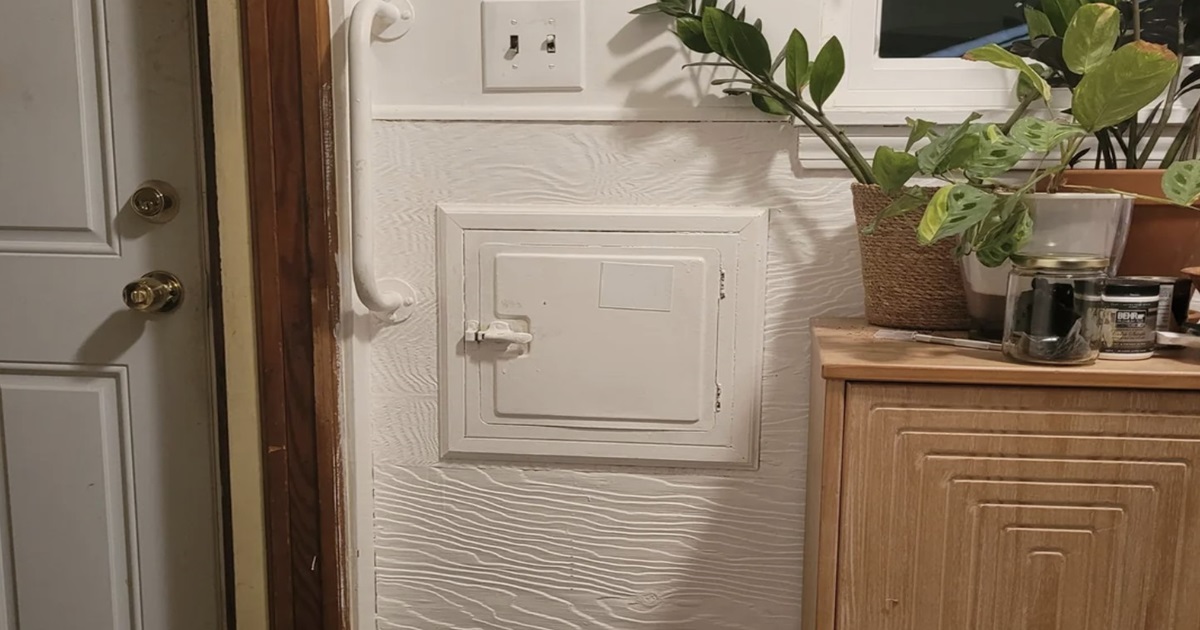“I found this tiny passage in my house, and NO, it’s not a laundry chute…”

source: Reddit
I am an old soul. Truly, I revel in everything vintage, everything old—it’s like stepping back into a world where each object tells its own intricate tale. From the clothes I wear to the furniture that adorns my living space, everything has a story. Thrift stores are my treasure troves, and the weirder the item, the better. There’s something profoundly beautiful about holding a piece that has weathered many storms. I cherish many heirlooms from my grandparents, each proudly displayed and used in my home. Whether it’s an old key, a forgotten button found lodged between floorboards, or a secret passageway, I’m all in. The more secretive, the more it piques my interest. Ever wondered why there were beds in ceilings in old days? Fascinating, right?

The other day, I stumbled upon a picture on Reddit that instantly grabbed my attention—a really tiny door in an old house. I recognized it immediately—it was a milk door! Can you imagine having a tiny milk door in your house? When you open it, you can literally see outside. That’s how milk was delivered back in the day. Is it just me, or is this sort of thing thrilling to anyone else?

If you’re not familiar with milk doors, allow me to delve into their charming history. These small doors were built into the exteriors of houses, often leading directly into the kitchen. They were designed just large enough to fit milk bottles, which milkmen would deliver early in the morning. Imagine waking up to fresh milk just waiting at your doorstep, without having to interact with anyone or even change out of your pajamas. This convenience was a small luxury in the early to mid-20th century, before the widespread use of refrigerators made daily deliveries less necessary.
Milk doors weren’t just for milk, though. They were often used to deliver other perishables like butter, cream, and eggs—essentially anything that a local farmer or dairy might provide. This tiny portal bridged the gap between local producers and urban consumers, embodying a community-connected food system long before the rise of today’s farm-to-table trends.

Though less common now, these tiny doors haven’t completely disappeared. In some neighborhoods, particularly those with many preserved historical homes, you might still find milk doors in use, albeit for different purposes. Some homeowners use them for mail or package deliveries, ensuring small parcels are securely dropped off inside rather than left out in the open. Others have sealed them up for energy efficiency but kept the frame and door as a nostalgic architectural feature.
Creative repurposing of milk doors can be a delightful endeavor. For instance, converting a milk door into a miniature library exchange where neighbors can swap books offers a quaint community charm. Or, perhaps transforming it into a hidden nook for a fairy garden might appeal to those with a whimsical sense of style. The possibilities are as endless as your imagination.

Turning a milk door into a storage spot for emergency supplies like flashlights, matches, and first aid kits is also a really smart idea. It combines the old charm of the house with something very useful today. It’s especially good in homes with kids because it’s easy for them to remember where the emergency supplies are.
The milk door is usually easy to reach and protected from the weather, making it a perfect place to keep these important items. Teaching kids where the emergency supplies are and how to use them can be done in a fun way, making them feel like they’re in on a big family secret.

Exploring old houses can reveal other fascinating features, too. Transom windows above doors, designed to help with air circulation when central air was a fantasy; dumbwaiters that carried meals to different floors; laundry chutes simplifying the tedious task of gathering dirty clothes; even built-in ironing boards tucked away into kitchen walls. Each feature served a practical purpose that, when discovered, provides a glimpse into the daily lives of those who lived decades before us.

Keeping these old features in our homes helps us feel connected to the past. I really love this connection—it’s like being on a treasure hunt in my own home, always finding little bits of history that show how clever people were back then. It feels magical to uncover these secrets from the old world that are still around us today.